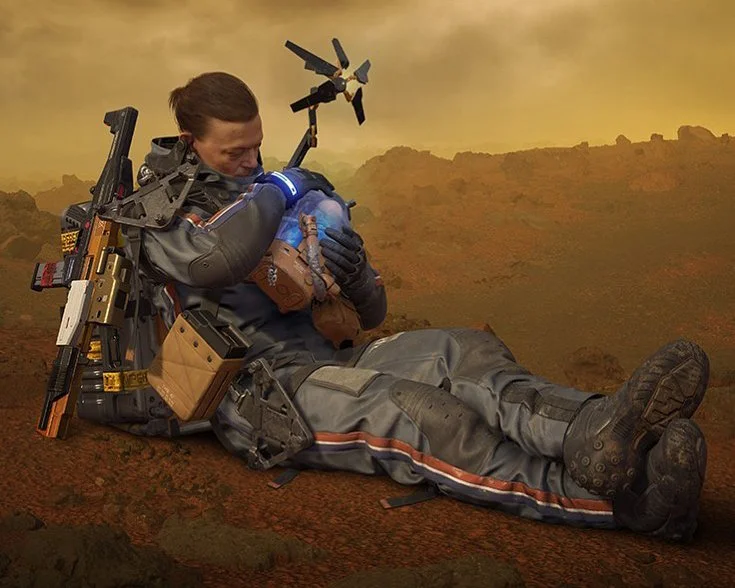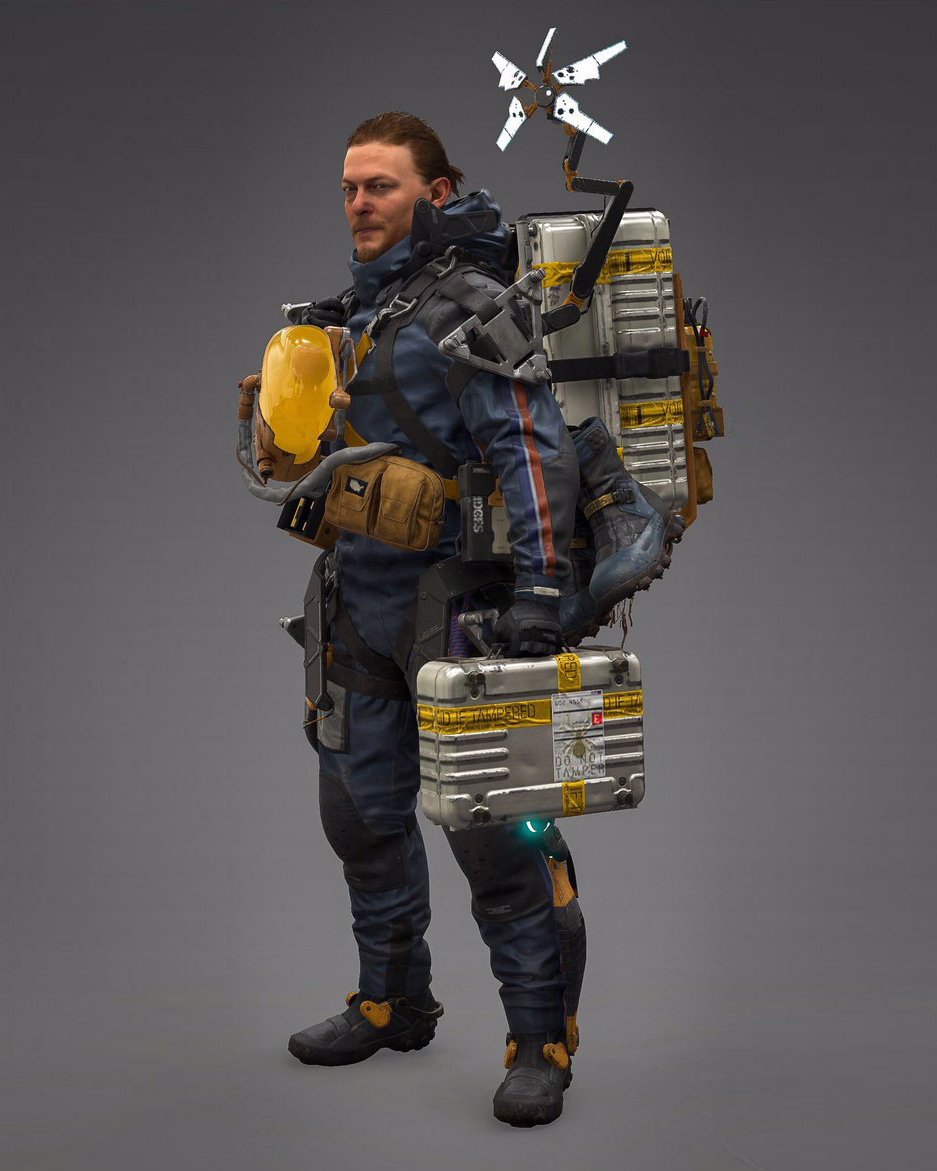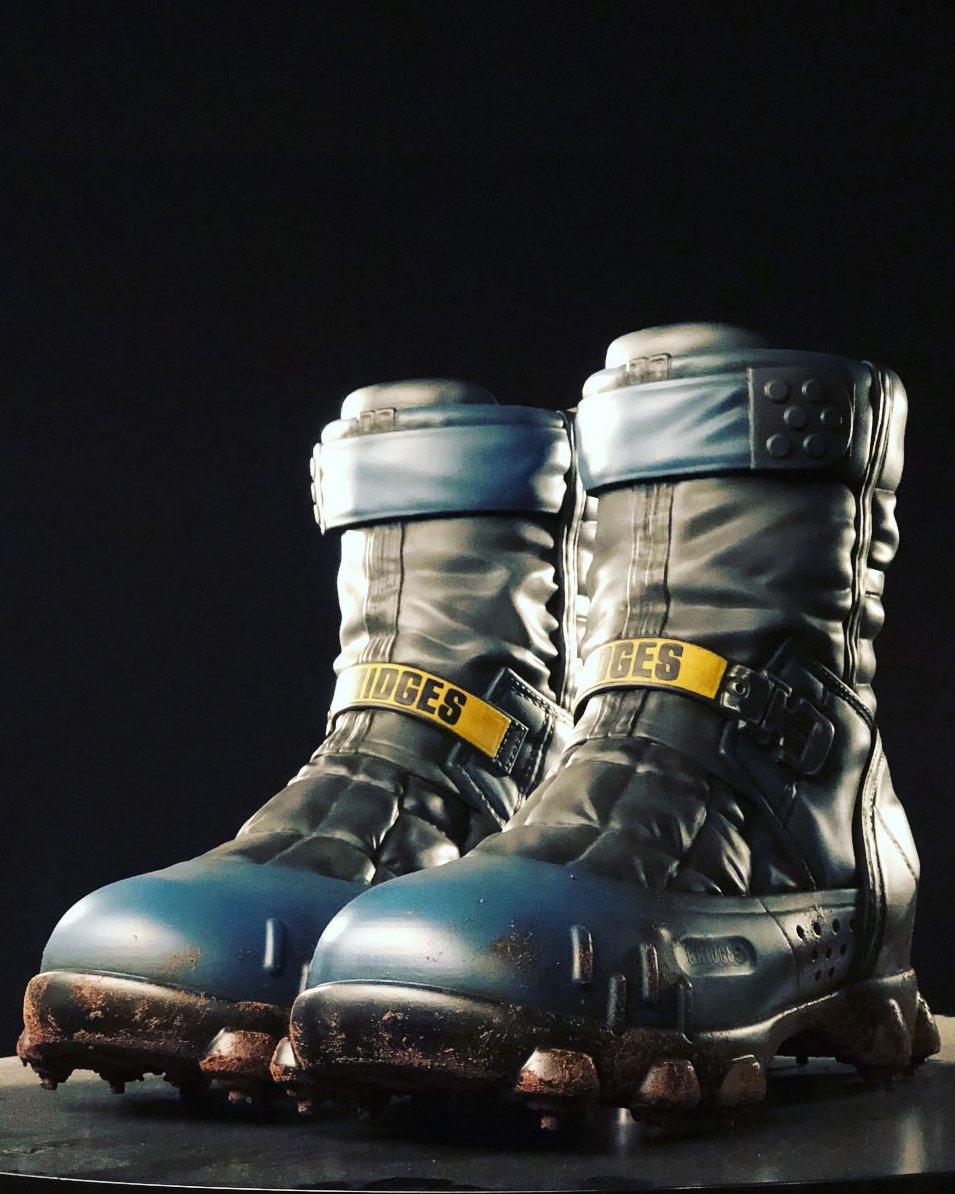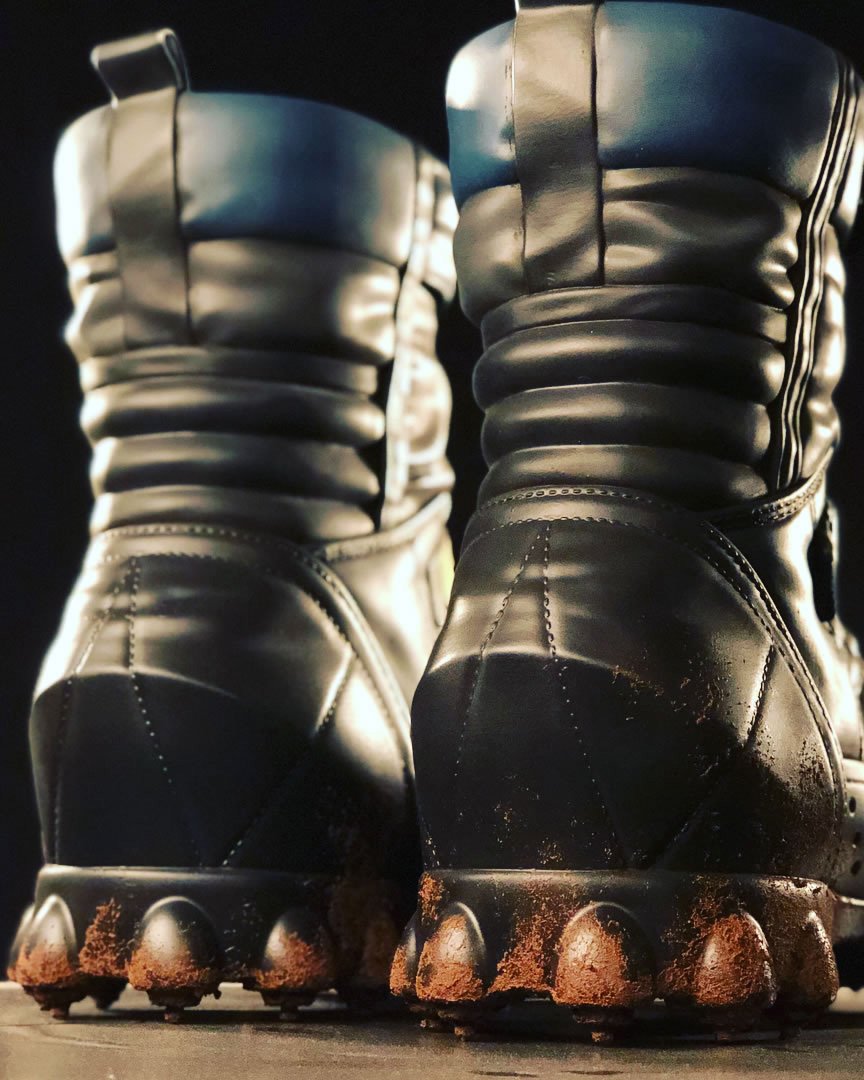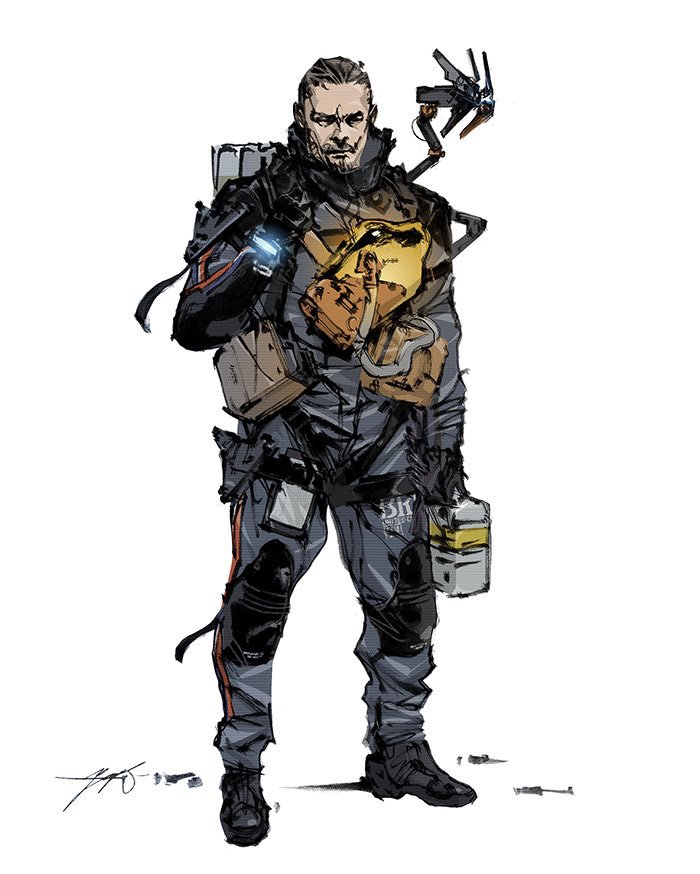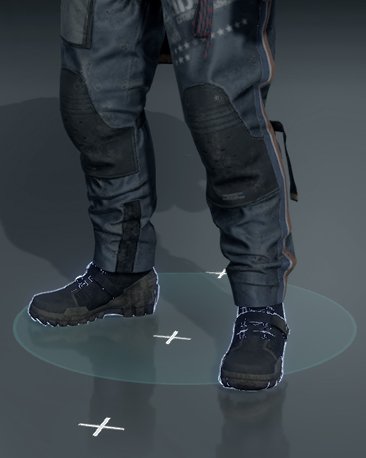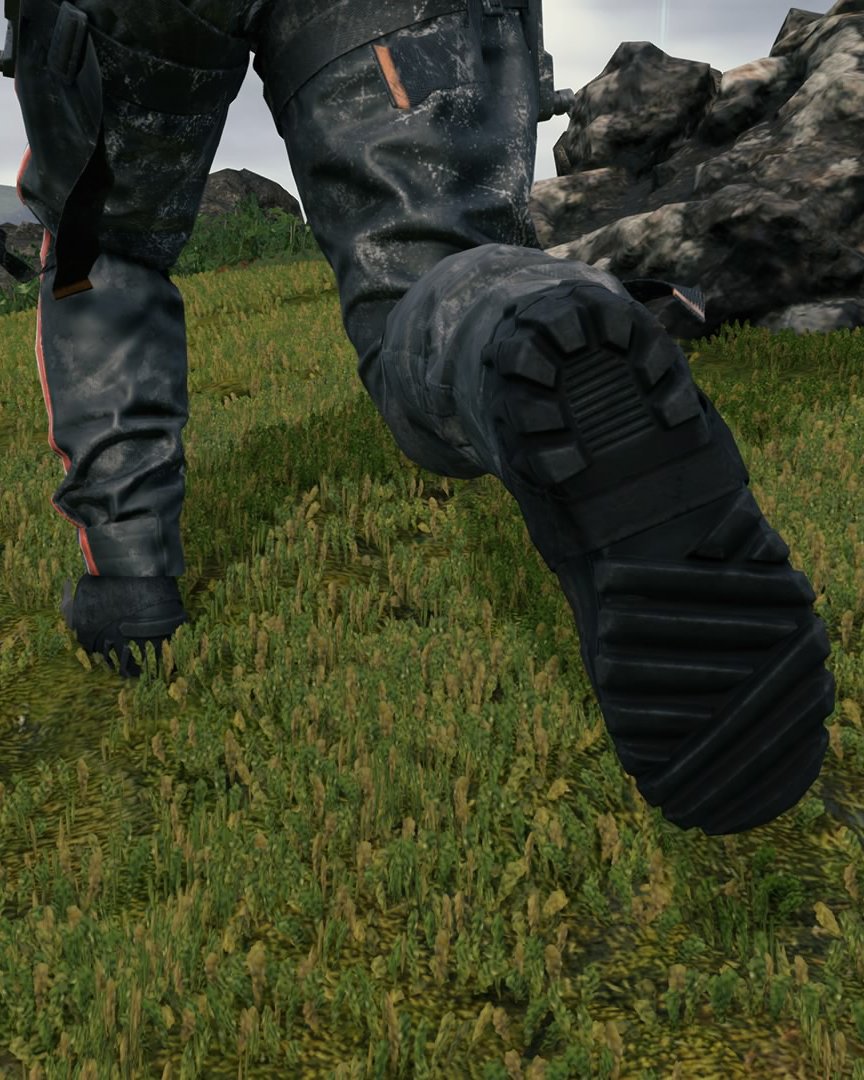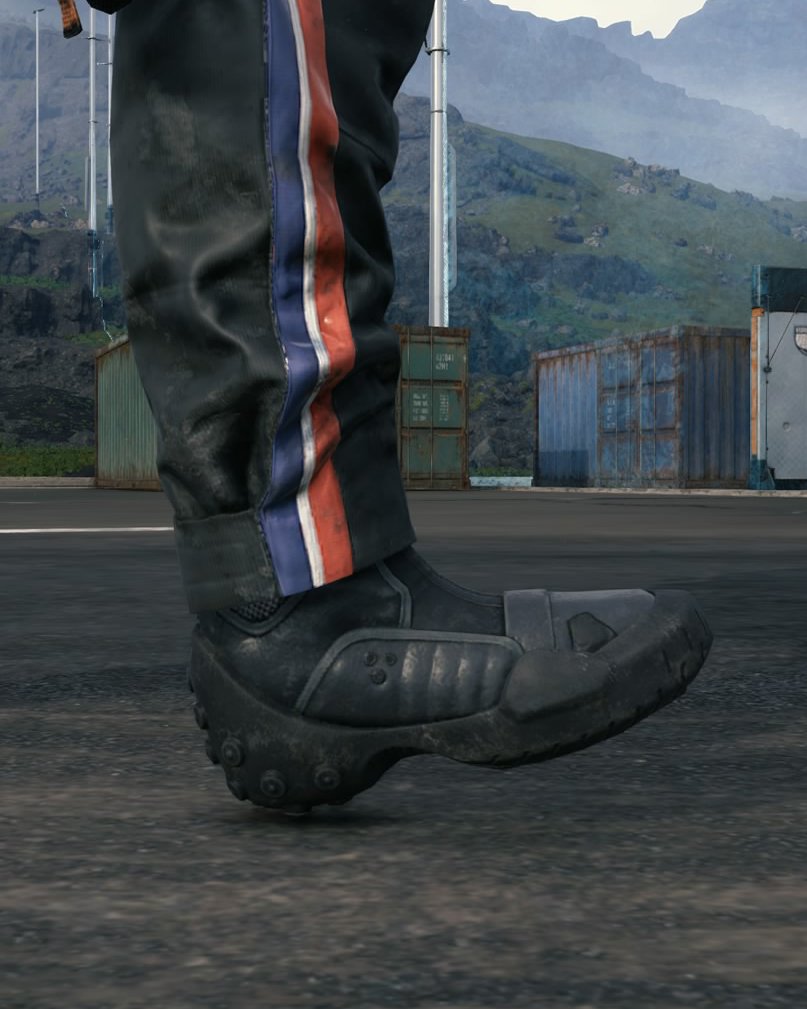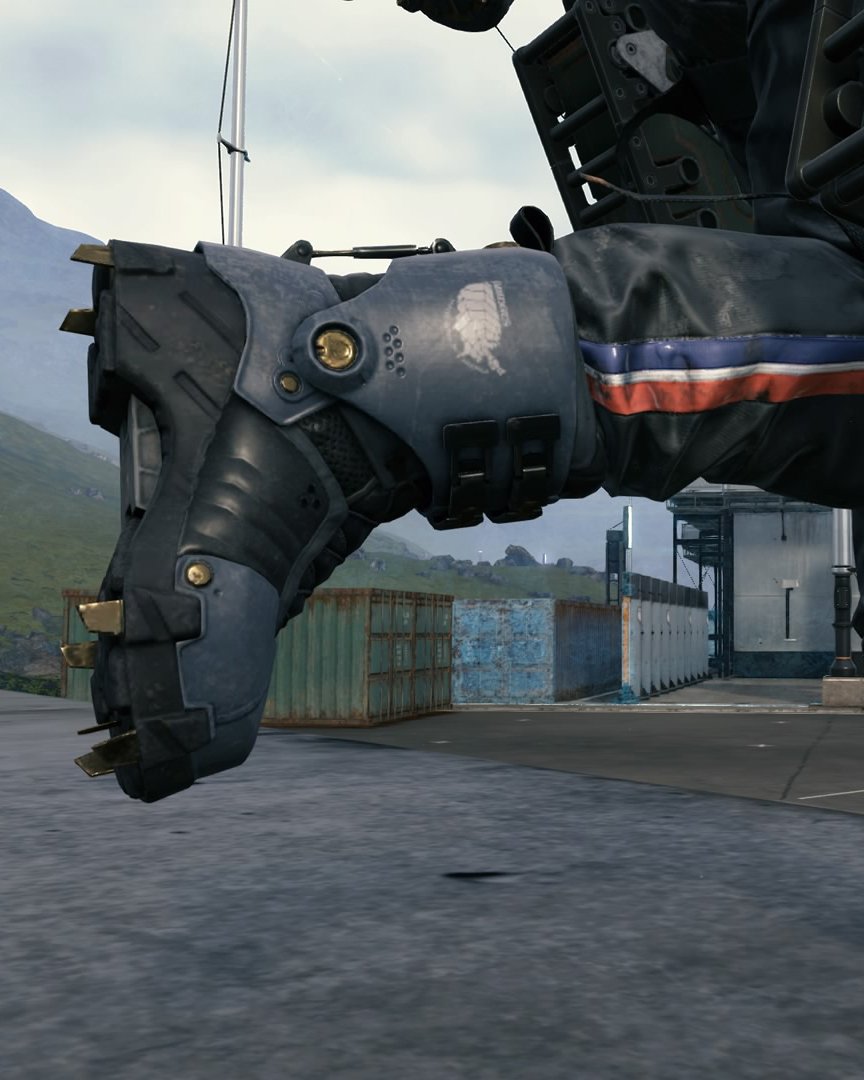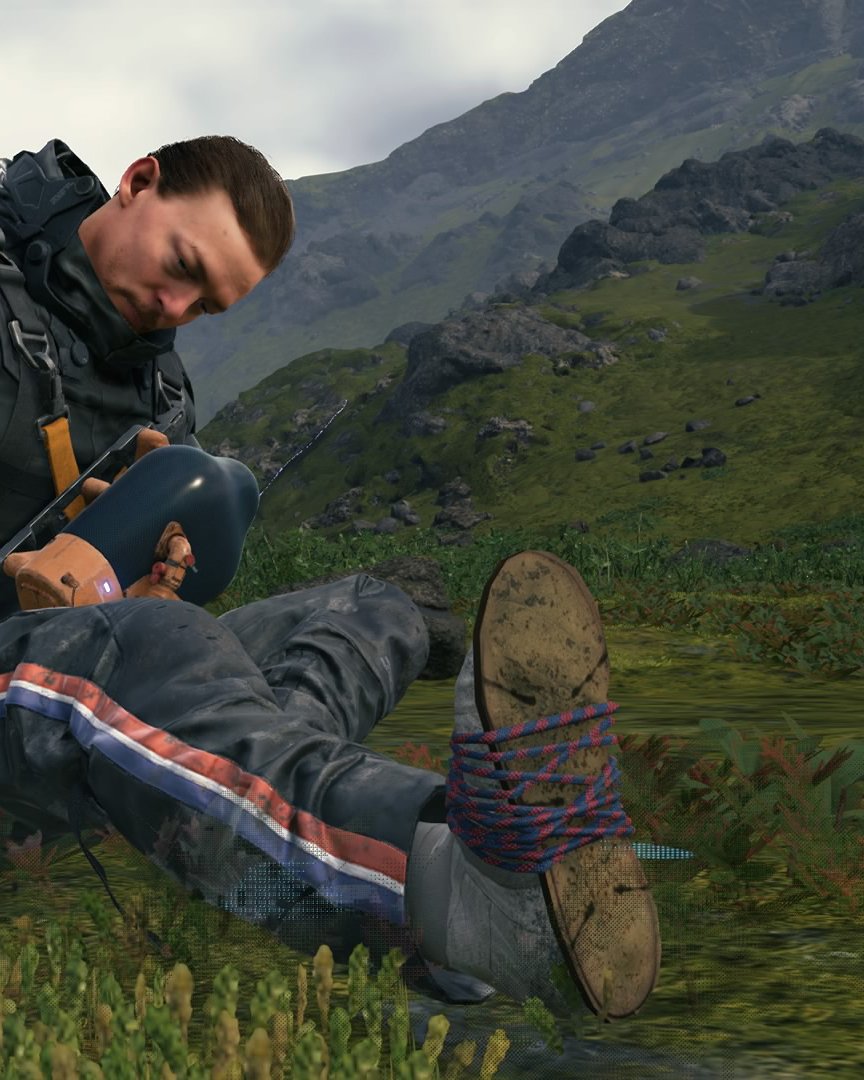Trust The Process: Death Stranding
Video game characters tend to boast huge swords, superhuman powers and a bottomless ammo clip, impressive but not the kind of thing we focus on here at CONCEPTKICKS. For Sam Porter, of Death Stranding, footwear is perhaps his most useful tool with no one pair ever being enough. Come with us as we walk you through the futuristic footwear in Hideo Kojima’s genre-bending masterpiece.
Sam Porter in-game
While the footwear in Death Stranding is fictional, we see video games as a virtual testing ground for blending form and function in design, being a perfect reflection of the cyclical influence between reality and sci-fi. Real technologies are often expanded upon within fictional worlds and in turn influence real designers to consider futuristic possibilities, and the same can be said between the relationship of fictional and real techwear. Hideo Kojima, creator of the Metal Gear Solid series for Konami, is someone who has explored this relationship like no other through gameplay mechanics and design. With an impressive career spanning several decades alongside lead artist Yoji Shinkawa, Metal Gear Solid established a futuristic techwear template that they have expanded on in the world of Death Stranding.
In a future apocalyptic America, Death Stranding follows Sam Porter (portrayed by actor Norman Reedus) a “porter” (courier) tasked with delivering supplies to various colonies in order to rebuild society, while avoiding enemies that attempt to attack you and your cargo. There’s a wider connected narrative, but at its core you’re a walking delivery man - emphasis on the walking. While vehicles are available, the game is at its truest form in the moments where Sam is kept on his feet, navigating the decimated land with everything on his back. The game’s reliance on walking is in part a test of patience from Kojima, effectively working as its own consistent mini-game as you not only learn how to improve Sam’s delivery skill but provide him with the best footwear suited to each job. Amongst the aforementioned wider connected narrative is “timefall”, a type of rain that rapidly ages what it touches, which has resulted in the decimated America. This coupled with the harsh terrains in the game provides Kojima and Shinkawa with the ultimate landscape to test their functional footwear, clothing and gear concepts through the gameplay.
Yoji Shinkawa’s early concept sketches for Death Stranding
Looking at the boots Sam discovers or obtains on his journey, we’ve broken down each pair considering their form and function in-game, how they have been influenced by existing designs, and the possibilities they propose for the future of footwear.
Porter Boots/MULE Boots/Terrorist Boots
As the standard boots worn by Sam and other freelance porters, they don’t usually last long with the strain of Sam’s insane cargos. With their construction being described as “old fashioned”, the silhouette resembles general issue boots that a military outfit might provide, especially with the addition of the spatter guards, though the contemporary stylised sole is reminiscent of the Nike SFB. These boots are also favoured by the MULEs, ex-porters who developed “Delivery Dependence Syndrome” which instils an obsession with stealing cargo from other porters. Kojima uses these boots to show the difference between Sam and the MULEs, as with every delivery Sam is able to upgrade while the MULEs are incapable of moving on from less functional footwear. Despite their poor sustainability, wearing the MULE boots grants Sam invisibility from MULE detection when in their territories.
Bridges Boots
Named after Bridges, the company trying to reconstruct the US society, these boots are part of Sam’s transition from freelance couriering to reconnecting the country, with him being the “bridge” between colonies. As he crosses the country Sam encounters more treacherous terrain, from sharp rock cliff faces to slippery snow-laden slopes, the Bridges boots are designed to counteract these challenges. Available in three different craft-able versions starting at Level 1, each upgrade depending on the materials used to craft them has its own technologies incorporated to allow them to be more durable and useful to specific terrains.
Primarily made of an unnamed resin, these boots are resistant to the damage caused by timefall, especially at Level 2 and 3, the designs of these boots are far more techwear/extreme sports inspired compared to the militaristic Porter boots. Despite having more materials each upgrade, every Bridges boot level up retains the exact same weight from Level 1, showing that Bridges have successfully made manufacturing improvements to have no drawbacks in affecting Sam’s speed or stability when carrying cargo.
Level 1
At Level 1 the Bridges boot is already a considerable upgrade from the Porter, including a gripped heel and ankle support with a sole not dissimilar to Eytys Fugu or the Nike React tooling, particularly the Nike x Undercover React Boot. Providing a more durable degree of traction these assist Sam in navigating the mountainous America, with the underside of the outsole suggesting more flexibility than the Porter boot.
Level 2
The incorporation of metals for Level 2 has resulted in improved impact-resistance, vastly reducing any fall damage from the jagged rock surfaces or slopes. However, with newly improved grip, falling shouldn’t be too much of an issue. Placed on the underside of the sole, upgrading them to more of a techwear mountaineering boot, they offer greater support when traversing cliffs and increased mobility in the areas with high winds and snow. The inclusion of quilted padding on the upper reminds us of the Bottega Cassettes, showing that while the designers place emphasis on functionality, they still want to provide Sam warmth as you start to explore snowy areas.
Level 3
Having an overall appearance similar to ski boots, Level 3’s additional spikes are even more useful in slippery environments. Complete with outer layer covering and solid ankle support, though this time upgraded with mechanical pistons, these pair well with the All-Terrain Power-Skeleton, an exoskeleton leg attachment. With its own level up system improving mobility and carry-weight, the Power-Skeleton gains crampon-like fixtures allowing you to traverse the slopes with ease when attached. This combination shows how the ability to “level up” in gaming pushes the boundaries of a design through use of its sci-fi attributes, with techwear essentially becoming “mechwear”.
Chiral Boots
In Death Stranding, chiral crystals are a rock formation that are practically immune to the effects of timefall, so it would make sense that a pair of boots fabricated with them would be an essential techwear for Sam’s journey. Incorporating the best elements of the Bridges boot, these boots are highly resistant to fall damage and weigh half as much as the other available boots. These boots combine techwear/extreme sportswear elements with fictional materials to provide the player with the most well rounded footwear in the game, offering the perfect blend of form and function within the context of gameplay mechanics and even a glimpse into a somewhat-realistic future footwear design evolution.
Sandalweed
There will be moments, especially early on, when you find yourself far from a material distribution centre and your boot inevitably breaks forcing Sam to walk barefoot and bloody. You can continue and risk losing health or search for Sandalweed. This wearable weed can be found growing in the wilderness, providing a quick replacement to your footwear, as Sam uses his trusty rope to tie the sole-shaped plant around his feet. Though nowhere near as durable as any boot in the game, they do render Sam’s steps completely silent, so you can avoid encountering enemies.
The idea of growable footwear is something we at CONCEPTKICKS are particularly interested in for how it presents a relationship between the materials we use and how we use them. As Sandalweed almost entirely bypasses the costly steps needed to manufacture footwear, if a real world alternative exists there’s an opportunity here not to be missed by designers. A process like this definitely reminds us of the Nike Considered line, using local only manufacturing methods to create the sole with sustainability at its core. Given the nearly barren landscape left on Earth, the addition of Sandalweed almost seems like the Earth coming back to give Sam a helping hand - or helping foot, in this case - in restoring society to what it once was. In the context of the game, the idea is translated into being the best plan B, but it does make us consider how this could be if treated as plan A. Is growable footwear only rooted in fiction?
We like to think from these break-downs that you can see why this game caught our attention and encouraged a lot of creative thinking about the possibilities of the future of footwear, but it certainly wasn’t just us who thought this. Kojima Productions have proven to have a wide net of collaborative interest with creators, featuring appearances from the likes of director Guillermo Del Toro to horror manga artist Junji Ito, all portraying characters that help Sam on his journey. One noteworthy creator being ACRONYM’s Errolson Hugh (portraying Alex Weatherstone in-game) who the game’s art director, Yoji Shinkawa, is a contemporary and fan of - as is clear in the game’s visual aesthetic direction throughout Death Stranding. With this mutual appreciation and support came a collaborative ACRONYM piece, the J1A-GT jacket, inspired by Sam’s own Bridges jacket from the game. Being made with GORE-TEX as a nod to the functionality in-game and featuring a yellow pocket as reference to Sam’s companion BB - something quite unique to the garment as ACRONYM rarely apply colour, further illustrating just how influential the game is.
From growable, wearable weeds to mechanical stabilising supports, the footwear design in Death Stranding shows how functional design in video games can present possible developments for techwear, with the gameplay opportunities being the useful testing ground to explore and challenge limitations. Highlighting footwear as the key component to the traversal system in the game shows the potential that designers can achieve, as well as being celebratory of how far footwear technology has come that it can be considered futuristic despite being mostly a reflection of now. While we don’t have to single-handedly travel across the country to deliver copious amounts of cargo on foot, in the event we ever do at least we have a good idea of how we could.

